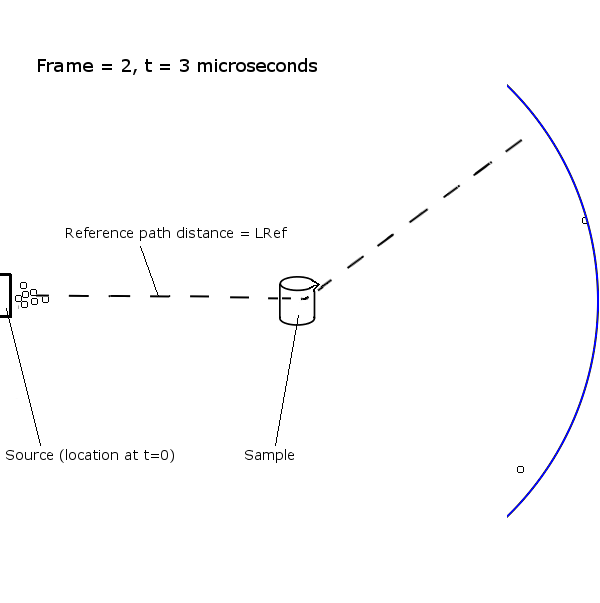UnwrapSNS v1¶
Warning
UnwrapSNS is deprecated (on 2025-03-24) and has no replacement.
Summary¶
Takes an input workspace that contains ‘raw’ data, unwraps the data according to the reference flightpath provided and converts the units to wavelength. The output workspace will have common bins in the maximum theoretical wavelength range.
Properties¶
Name |
Direction |
Type |
Default |
Description |
|---|---|---|---|---|
InputWorkspace |
Input |
Mandatory |
Contains numbers counts against time of flight (TOF). |
|
OutputWorkspace |
Output |
Mandatory |
This workspace will be in the units of time of flight. (See http://docs.mantidproject.org/concepts/UnitFactory) |
|
LRef |
Input |
number |
Mandatory |
A distance at which it is possible to deduce if a particle is from the current or a past frame based on its arrival time. This time criterion can be set with the property below e.g. correct when arrival time < Tmin. |
Tmin |
Input |
number |
Optional |
With LRef this defines the maximum speed expected for particles. For each count or time bin the mean particle speed is calculated and if this is greater than LRef/Tmin its TOF is corrected. |
Tmax |
Input |
number |
Optional |
The maximum time of flight of the data used for the width of the frame. If not set the maximum time of flight of the data is used. |
Description¶
Slow moving (low energy and long wavelength neutrons) may be detected after the end of the frame in which they entered the experimental apparatus. A schematic example of this is shown below where the neutrons are marked as circles.

The two neutons on the right of the diagram were actually produced in frame 1 but will be recorded in frame 2 at low time of flight (TOF) and a straight ConvertUnits v1 will bin them at high energy and short wavelength! UnwrapSNS v1 moves those particles to the end of the spectrum by increasing their time of flight by the duration of a frame multiplied by the number (one or more) of frames they were “late” by.
To assess if it is impossible for a particle to have arrived in the same frame it was detected a maximum speed for particles is calculated based on LRef and Tmin. The algorithm then calculates the mean speed of all detected particles and corrects those whose speed was greater than the maximum.
Normally LRef is the total length of the flight path from the source (particle location when t=0) to a detector. For event data, if the detector with the shortest flight path was chosen it maybe possible to leave the Tmin empty and so that a first particle arrival time is used. Otherwise the Tmin should be set to < the arrival time of the fastest neutron at the given detector.
If Tmin was set either Tmax or DataFrameWidth must be set to ensure the frame duration calculated correctly. If Tmax was set the frame width is the difference between Tmax and Tmin. DataFrameWidth overrides this and the width is the difference between the longest and shortest TOFs in the data.
Usage¶
Example: Unwrap sample data
ws = CreateSampleWorkspace("Event",NumBanks=1,BankPixelWidth=1)
wsOut = UnwrapSNS(ws,LRef=10)
print("Input {}".format(ws.readY(0)[ws.blocksize()-1]))
print("Output {}".format(wsOut.readY(0)[wsOut.blocksize()-1]))
Output:
Input 7.0
Output 0.0
Categories: AlgorithmIndex | CorrectionFunctions\InstrumentCorrections | Deprecated
Source¶
C++ header: UnwrapSNS.h
C++ source: UnwrapSNS.cpp